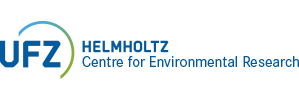Publication Details |
| Category | Text Publication |
| Reference Category | Book chapters |
| DOI | 10.1007/978-3-319-20796-4_38-1 |
| Title (Primary) | Problems of hydrophobicity/bioavailability: an introduction |
| Title (Secondary) | Cellular ecophysiology of microbe: Hydrocarbon and lipid interactions |
| Author | Harms, H.; Smith, K.E.C.; Wick, L.Y.
|
| Publisher | Krell, T. |
| Source Titel | Handbook of Hydrocarbon and Lipid Microbiology |
| Year | 2018 |
| Department | UMB |
| Page From | 3 |
| Page To | 15 |
| Language | englisch |
| UFZ wide themes | RU3; |
| Abstract | This chapter discusses how the hydrophobicity and other properties of oil hydrocarbons influences their availability for toxic exposure, microbial degradation and growth. It also describes how the hydrocarbon bioavailability can control the maximum population size of a degrading microbial community in a given habitat (carrying capacity). Bioavailability is operationalized and presented as a process at the interface between microbial dynamics and physicochemical constraints. |
| Persistent UFZ Identifier | https://www.ufz.de/index.php?en=20939&ufzPublicationIdentifier=19145 |
| Harms, H., Smith, K.E.C., Wick, L.Y. (2018): Problems of hydrophobicity/bioavailability: an introduction In: Krell, T. (ed.) Cellular ecophysiology of microbe: Hydrocarbon and lipid interactions Handbook of Hydrocarbon and Lipid Microbiology Springer International Publishing, Cham, p. 3 - 15 10.1007/978-3-319-20796-4_38-1 |
|
